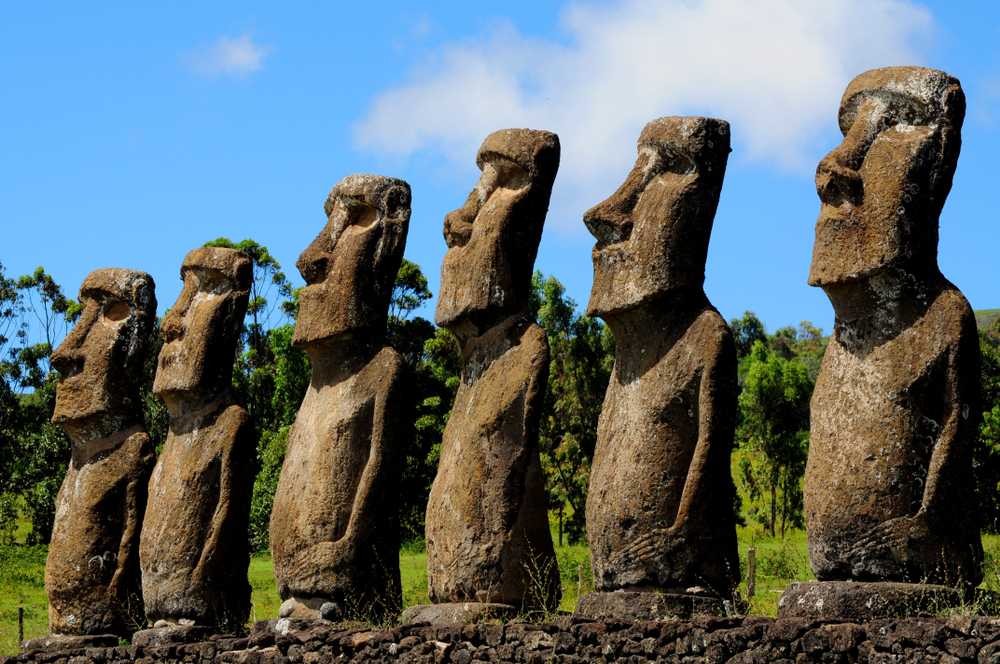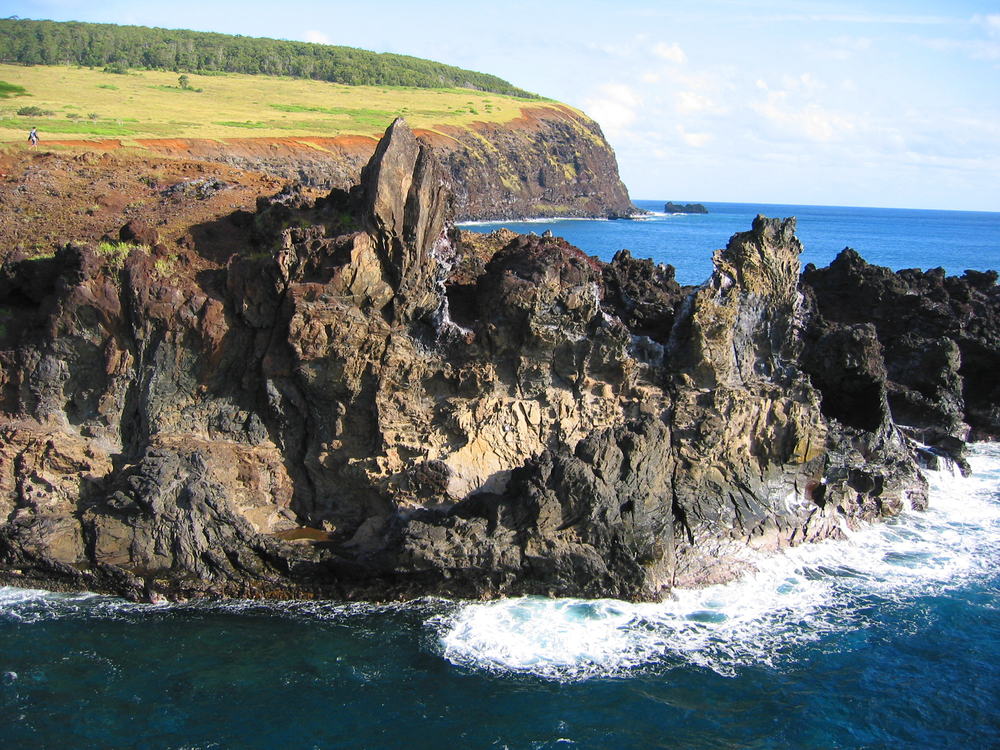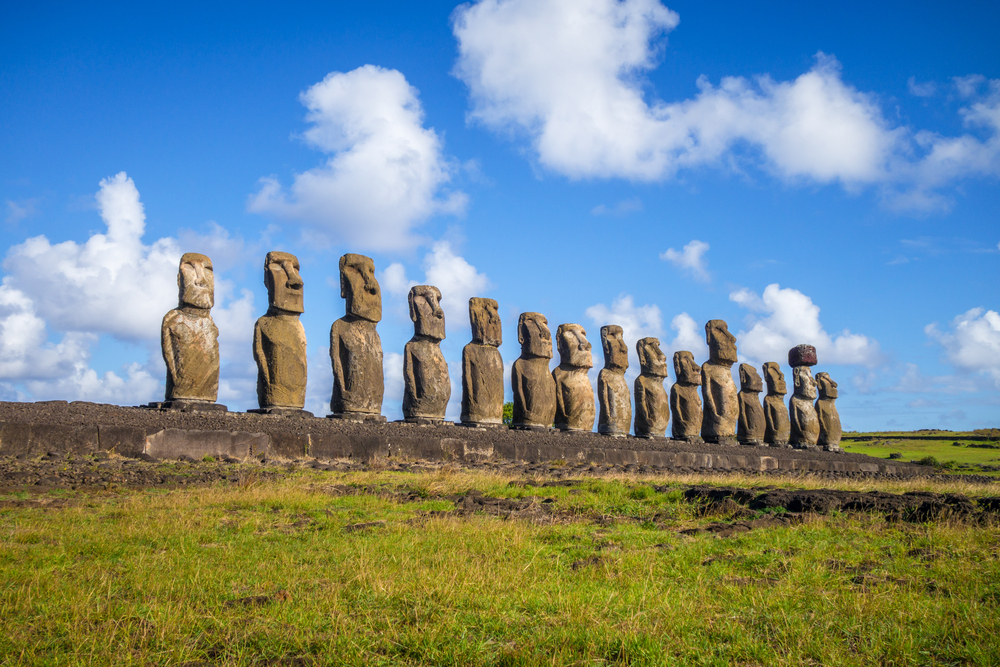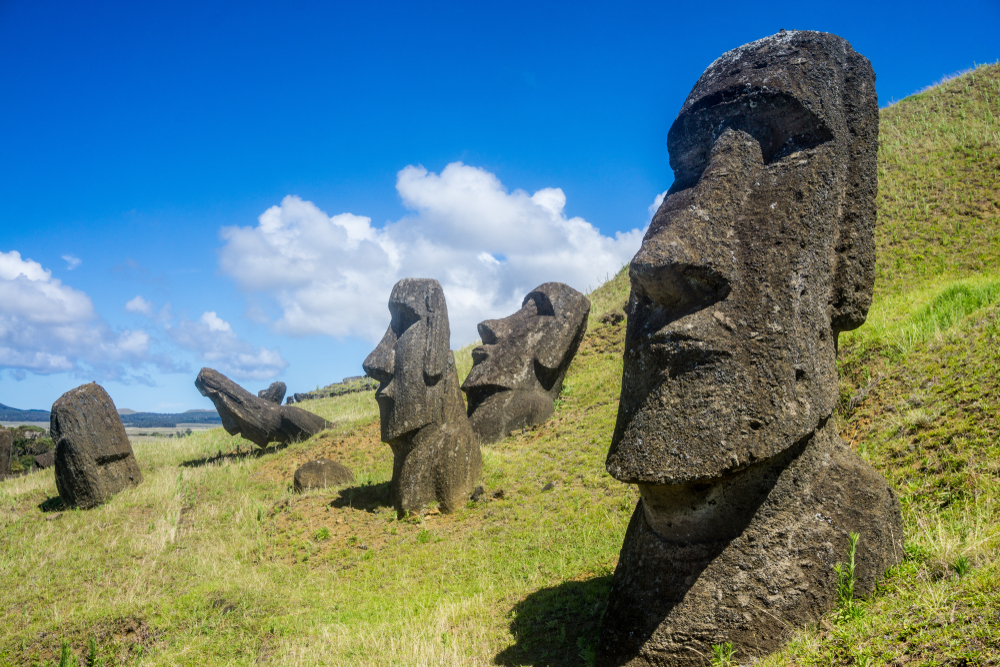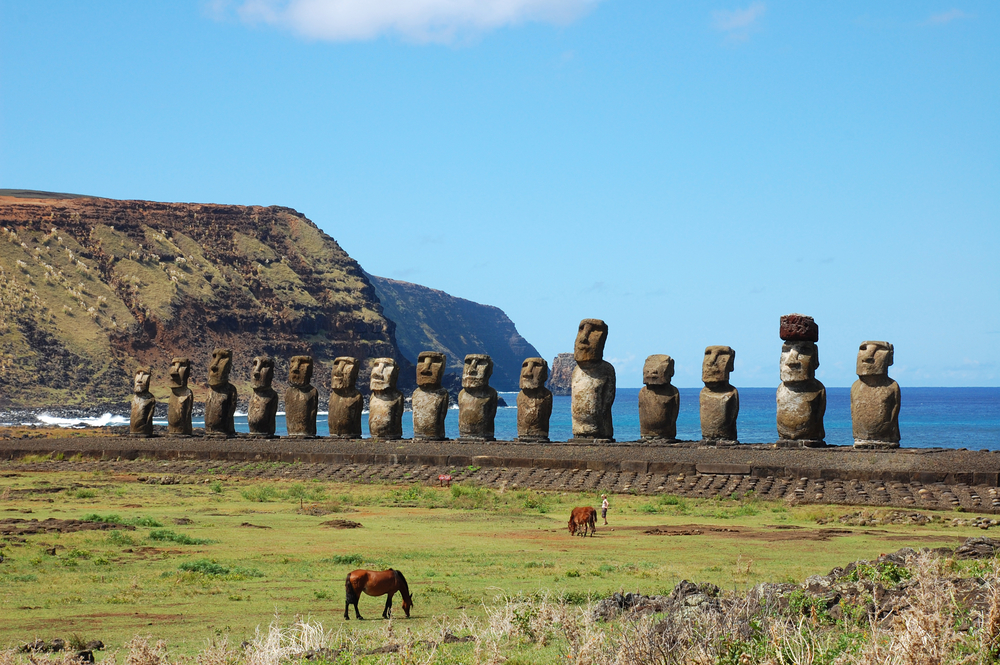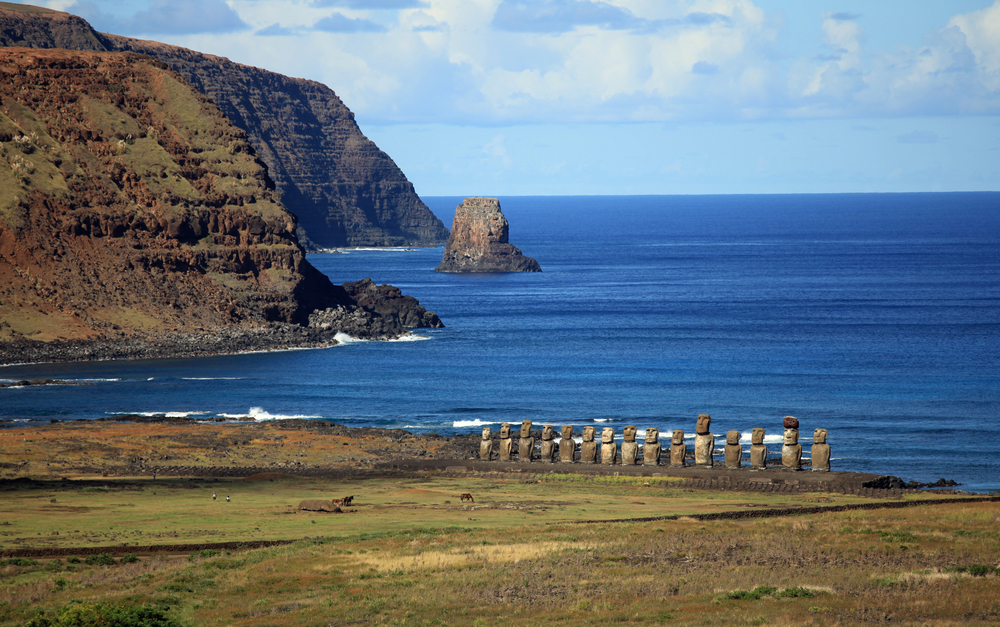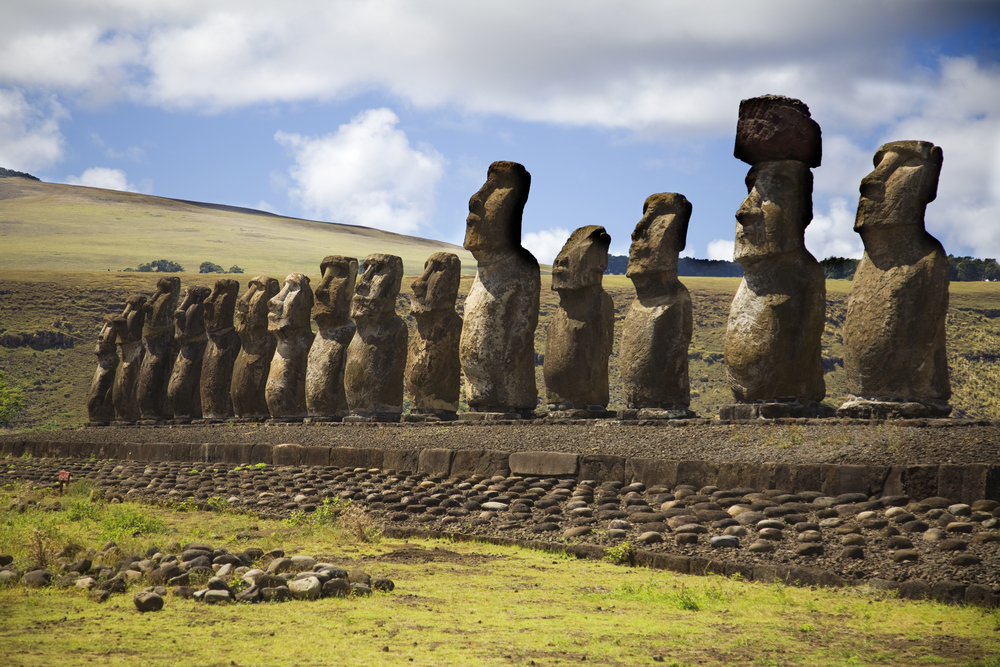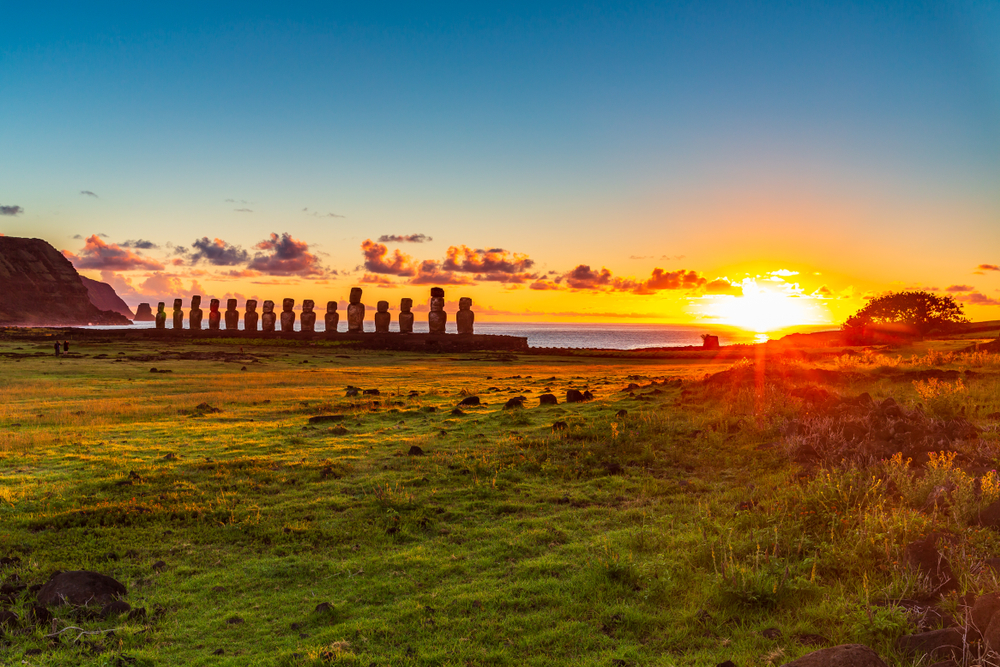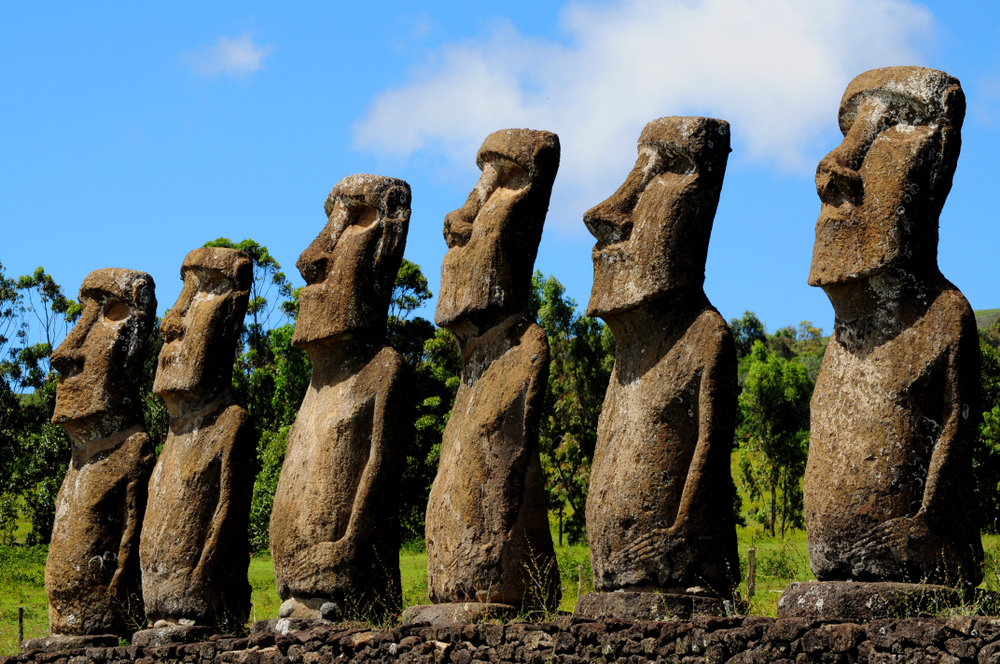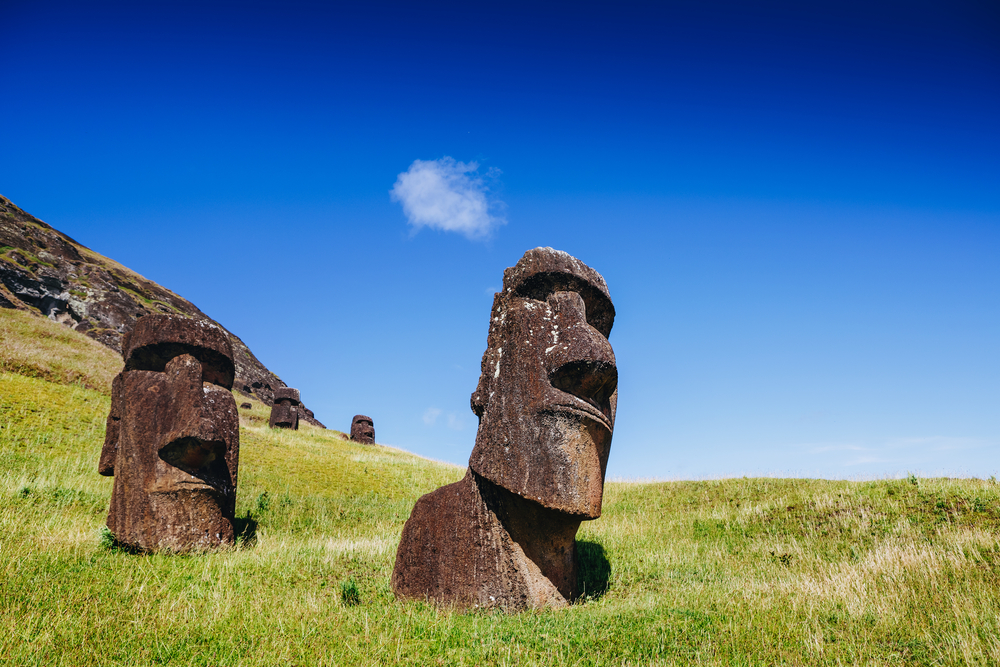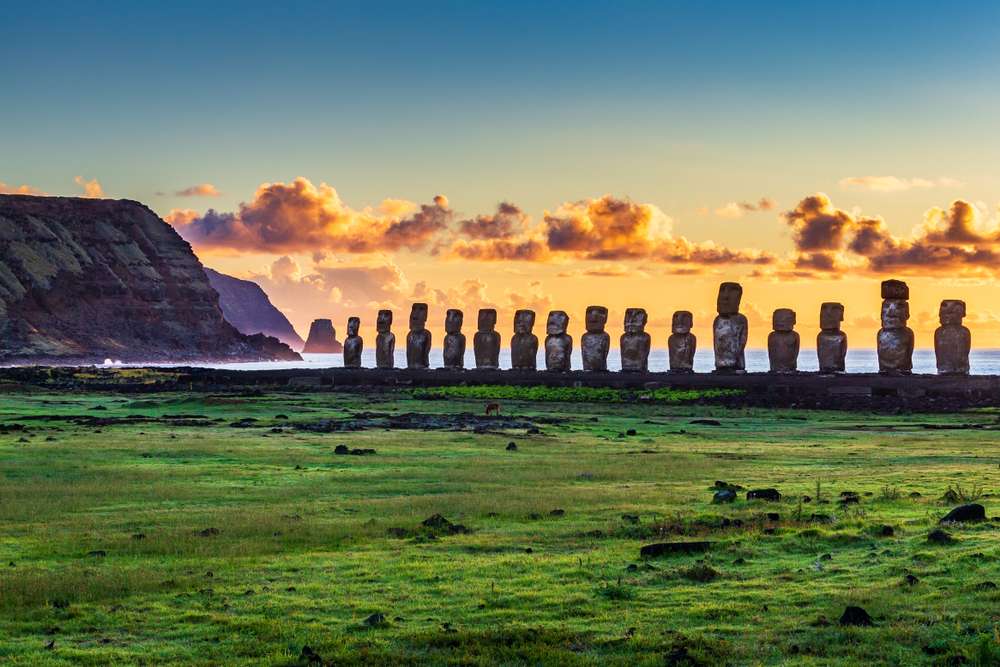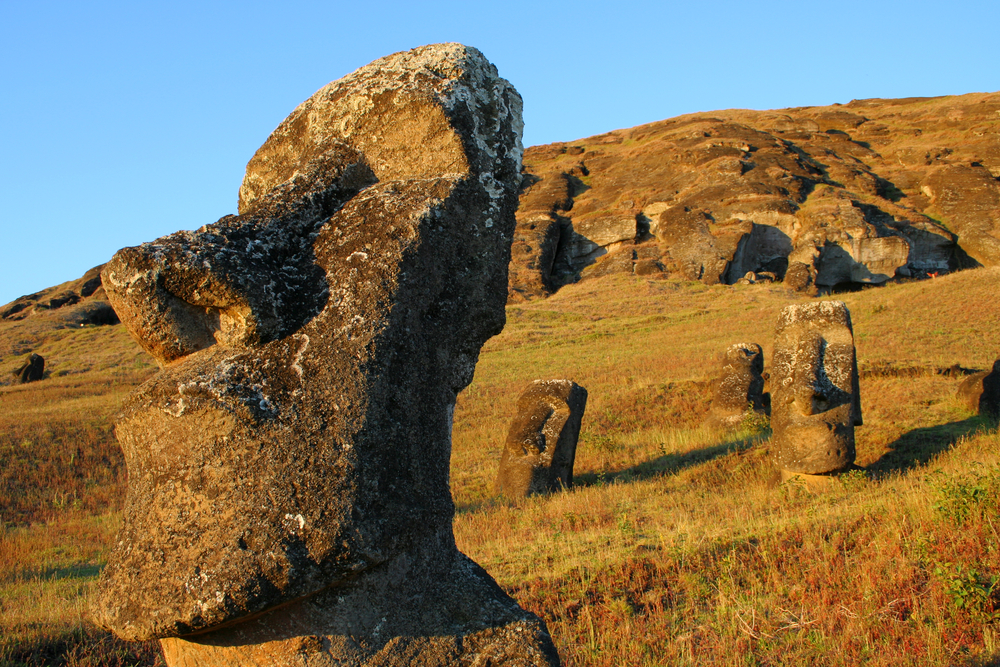Rapa Nui National Park is located on Easter Island, Chile. The island and park are located 2,300 miles (3,700 km) west of Chile establishing the eastern border of Polynesia. The park encompasses an area of 28 square miles(71.3 sq km).
The triangle-shaped park stretches 13 miles (23 km) long with a width of 6.8 miles (11 km). Stretching from sea level to a height of 980 feet (300 m), the island features volcanic craters, lakes, and a rugged coastline.
The park is renowned for the 887 moai statues and 300 ceremonial pltaforms found across the island. These volcanic statues serve as historical artifacts of the megalithic culture that no longer exists. The island was discovered by the western world in 1722 when the Dutch explorer Jacob Roggeveen first saw the island on Easter day. He subsequently called it “Easter Island.”
The island and park are mostly covered in grass with minimal trees and shrubs found on the island. About 45 of the 150 vegetation species are endemic. The national park is not known of for wildlife. Some of the more popular species that are found around the island include a variety of marine turtles and two different lizards. There are only four species of birds with one being marine and the other three being terrestrial.
Photos
Things to See
Rapa Nui National Park Trails
There are 14 trails that traverse throughout the national park providing trekkers with an opportunity to experience both the heritage of the moai statues and the rugged and grass-covered landscapes.
Park Protection
Rapa Nui National Park was created to protect the cultural heritage of the 887 Moai scattered across Easter Island. In recognition of the cultural significance, UNESCO has declared the area a Worled Heritage Site. Management and conservation responsibilities have now been turned over to the Rapa Nui local people. All revenue generated by the park visitors now goes into preservation and protection.
The park protects the nearly 900 moai statues, over 300 ceremonial platforms, and the abundance of other historically and culturally significant structures that represent the culture’s life activities.
Sources
- Britannica, Easter Island, https://www.britannica.com/place/Easter-Island, retrieved January 2022.
- Lonely Planet, Easter Island Rapa Nui, https://www.britannica.com/place/Easter-Island, retrieved January 2022.
- Sacred Island Film Project, Rapa Nui Easter Island, https://sacredland.org/rapa-nui/, retrieved January 2022.
- UNESCO, Rapa Nui National Park, https://whc.unesco.org/en/list/715/, retrieved January 2022.
- World Monument Fund, Easter Island Rapa Nui Moai Conservation Project, https://www.wmf.org/project/easter-island-rapa-nui%E2%80%94moai-conservation-project, retrieved January 2022.
